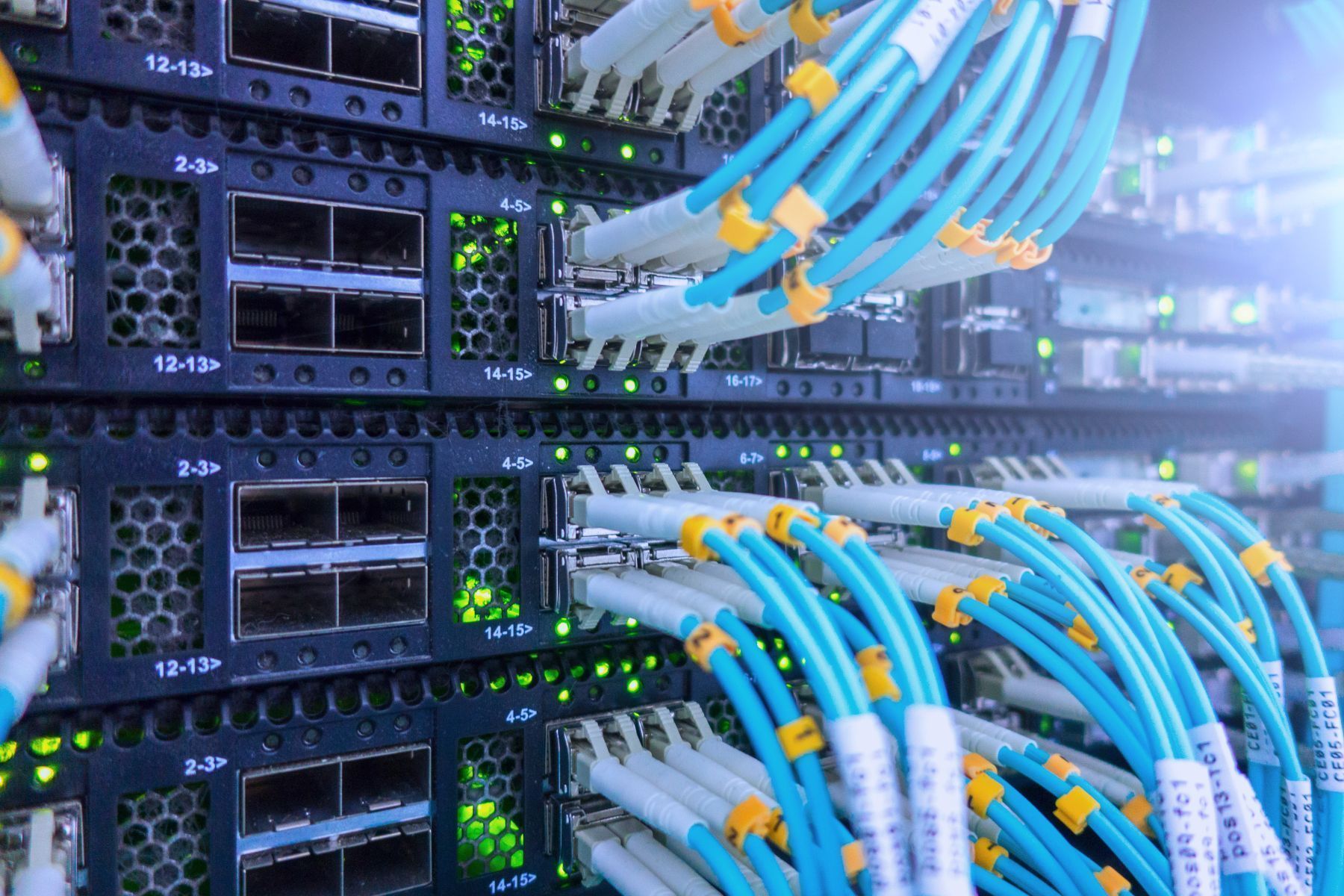
Why Top CEOs Are Investing in Optical Fibre Internet for Remote Work (And You Should Too)
The Remote Revolution: Why Businesses Are Shifting Away From Offices
In early 2020, the world faced a seismic shift. Suddenly, the spaces we called “offices” were empty, and homes became the new workplaces. As someone who spent years working with fibre optic cabling installations for bustling corporate buildings, I witnessed firsthand how quickly businesses had to adapt.
Now, as companies reevaluate priorities, one thing is clear: the days of packed office floors are gone for many. A recent report revealed that 80% of companies have embraced hybrid or remote models, driven by the undeniable cost benefits. Why spend millions on real estate when employees can deliver the same results from home?
However, this shift has brought new challenges. The most common complaint I’ve heard from business owners is this: “Our employees’ home internet isn’t cutting it.” And they’re right. For modern businesses relying on optical fibre internet for remote work, productivity is only as strong as the connectivity supporting it. That’s where optical fibre internet comes in.
What Optical Fibre Internet Brings to the Table
The Speed Employees Need, Without the Frustration
When I think of speed, I’m reminded of a project I worked on for a global tech firm. They had employees scattered across the world, uploading large design files daily. Before they switched to optical fibre internet, these employees wasted hours on slow uploads that delayed workflows.
Optical fibre changed everything. With symmetrical speeds, employees could upload massive files in seconds, not hours. Unlike traditional cable or DSL connections, fibre ensures that both download and upload speeds are lightning-fast. This is crucial for video calls, cloud-based collaboration, and data-heavy tasks that are now the backbone of optical fibre internet for remote work.
Reliability You Can Count On
Imagine this: It’s 10 a.m., your entire sales team is on a Zoom call pitching a multimillion-dollar deal, and… the call drops. We’ve all been there, and it’s a nightmare. Traditional internet connections are prone to outages during bad weather, peak usage times, or even minor electrical interference.
Optical fibre, however, doesn’t suffer from these issues. Its design is immune to electromagnetic interference, meaning it delivers consistent uptime regardless of conditions. I often describe fibre as the “workhorse of connectivity” to clients—it just works when you need it most.
The ROI of Investing in Optical Fibre for Your Workforce
For large businesses, investing in optical fibre internet isn’t just about making employees happy; it’s about making smart financial decisions.
Cut Costs While Boosting Productivity
I’ll never forget a conversation I had with a CFO from a Fortune 500 company. She explained that their annual real estate costs for maintaining a downtown office space were nearing $1.5 million. After transitioning to remote work and upgrading employees to fibre internet, they saved 75% of those costs.
How? They no longer needed to maintain empty office spaces, yet their employees could work as effectively from home—if not more so. Optical fibre provided the infrastructure they needed to make
remote work seamless. It’s a
fraction of the cost of office leases, and the productivity gains are undeniable.
Future-Proof Your Business
Technology is evolving rapidly. Ten years ago, we didn’t rely on video conferencing, cloud storage, or collaborative platforms like we do now. With tools like AI-powered analytics, virtual reality meetings, and 8K streaming becoming mainstream, your internet infrastructure needs to keep up.
Fibre optic internet is future-proof, capable of supporting innovations for decades to come. When you invest in fibre for your employees, you’re not just solving today’s problems—you’re preparing for tomorrow’s demands.
How Optical Fibre Internet Empowers Employees
Crystal-Clear Video Calls and Real-Time Collaboration
One CEO I worked with once joked, “If I see another frozen Zoom face, I’m going to lose it.” We laughed, but the frustration is real. Poor-quality calls can derail productivity, and employees don’t have time to deal with dropped connections.
For businesses prioritizing optical fibre internet for remote work, employees experience zero lag during meetings. This reliability fosters effective communication, whether they’re presenting to clients or collaborating on internal projects.
Faster Cloud Access for a Competitive Edge
Many businesses now rely on tools like Google Drive, Microsoft Teams, and Slack for file sharing and project management. However, slow internet can turn simple tasks into long, frustrating waits. Fibre internet ensures employees can upload, download, and access cloud-based tools with ease, streamlining workflows.
For a graphic design firm I assisted, this was a game-changer. Designers could send massive project files in seconds, meeting tight deadlines and keeping clients happy.
The Emotional Side of Reliable Internet
When employees don’t have to fight with their internet, they can focus on what truly matters:
delivering results and finding balance.
I saw this firsthand when a large financial firm rolled out fibre internet for their remote employees. During a follow-up, one team member shared: “I used to dread work because of constant connectivity issues. Now, I can finish tasks faster and actually have dinner with my family.”
These stories remind me that investing in technology isn’t just about numbers—it’s about empowering people to do their best work without sacrificing their well-being.
Implementation: How to Roll Out Fibre Internet for Your Team
Step 1: Assess Your Team’s Needs
Start by analyzing your employees’ internet requirements. Consider factors like file sizes, video conferencing needs, and the number of connected devices in each household.
Step 2: Choose the Right ISP
Not all fibre plans are created equal. Look for business-grade packages with 24/7 support, guaranteed uptime, and scalable bandwidth options.
Step 3: Offer Professional Installation
To ensure employees get the most out of optical fibre internet for remote work, partner with providers who offer seamless installation and setup support. This minimizes downtime and ensures employees can start working efficiently right away.
FAQs About Optical Fibre Internet for Businesses
Why is optical fibre better for remote work?
Fibre provides unmatched speed, reliability, and bandwidth, making it ideal for video calls, large file transfers, and cloud-based collaboration.
How much does it cost to provide fibre internet to employees?
Costs vary, but many providers offer discounted bulk plans for businesses. It’s a fraction of the cost of maintaining office spaces.
Can fibre internet work in rural areas?
Yes, many providers are expanding fibre coverage to rural locations. Satellite internet can also complement fibre in remote regions.
Is fibre internet secure for business operations?
Absolutely. Fibre is harder to hack than traditional internet connections and offers enhanced encryption capabilities.
How does fibre internet reduce employee frustrations?
With faster speeds and zero lag, employees spend less time waiting and more time being productive, leading to improved job satisfaction.
Conclusion
Optical fibre internet isn’t just a luxury—it’s a necessity for businesses adapting to a remote-first world. It provides the speed, reliability, and scalability employees need to thrive, while saving companies millions in operational costs.
For business owners hesitant to invest, remember: the success of your workforce hinges on the tools you provide. By upgrading to fibre internet, you’re not just solving connectivity issues—you’re building a stronger, more productive future for your team.
Areas We Serve
- Los Angeles, CA Los Angeles, California, United States
- Beverly Hills, CA Beverly Hills, California, United States
- Commerce, CA Commerce, California, United States
- Culver City, CA Culver City, California, United States
- El Segundo, CA El Segundo, California, United States
- Gardena, CA Gardena, California, United States
- Pico Rivera, CA Pico Rivera, California, United States
- Santa Fe Springs, CA Santa Fe Springs, California, United States
Get started with Cat5Guy today!
Whether you need a new network installation, a Wi-Fi upgrade, or emergency cabling repairs, we’re here to help.


Get a Free Quote Today!
Contact Us
We will get back to you as soon as possible
Please try again later

Contact:
📞 Phone: (213) 273-3561
📧
Email: mike@cat5guy.com

